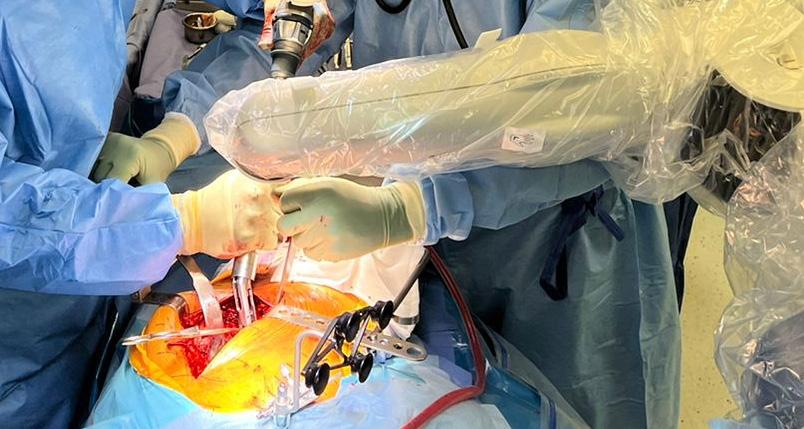CLINICAL | BLEEDING DISORDERS
How to distinguish AHA
Acquired bleeding disorders can accompany haematological, neoplastic, autoimmune, cardiovascular or liver diseases, but can sometimes also arise spontaneously.
T
HEY CAN MANIFEST as single factor deficiencies or as complex haemostatic abnormalities. The following article addresses acquired haemophilia A, an autoimmune disorder characterised by inhibitory autoantibodies against coagulation factor VIII, and is based on an article recently published in Haemophilia: The Official Journal of the
World Federation of Haemophilia. Patients with acquired bleeding disorders are often not seen first by haematologists or experts in bleeding disorders but rather by GPs, emergency or intensive care unit specialists, surgeons or any other specialty related to the site of first bleeding. For these physicians, it is often difficult to recognise a bleed as a
first symptom of what truly is a bleeding disorder. Firstly, because the bleed may not seem unusual. Laboratory tests would probably be done only if bleeds occurred without identifiable cause, were difficult to control, or frequently recurring. Secondly, if laboratory tests have been ordered, their interpretation can be challenging because abnormalities may sometimes indicate a
ACQUIRED HAEMOPHILIA (AH) BE AWARE OF THE SYMPTOMS OF A BLEEDING EPISODE DUE TO AH
Bleeding into the skin (purpura) and soft tissues1
! !
• AH is often associated with other autoimmune conditions, malignant disease, certain drugs and pregnancy1
!
Gastrointestinal bleeding1
Prolonged postpartum bleeding1
• AH is a potentially life threatening condition with mortality in range of 8-22%1
!
• Urgent Laboratory diagnosis is required when unexplained bleeding or bruising occurs.2
Haematuria1
Consider AH in patients with: Recent onset of abnormal bleeding, isolated prolongation in aPTT, Normal PT.2
TREAT ACCORDINGLY
Stop the bleed with NovoSeven®3
NovoSeven® is easy to use, convenient and portable with few reconstitution steps5 Con
12
90 µg/kg NovoSeven®
Full administration in 2–5 minutes5 Peak coagulation ability in 10 minutes6
every
9
2-3
hours 6
28 May 2022 | MEDICAL CHRONICLE
12
Until clinical haemostasis 3 is achieved4
every
9
4-12 hours 6
Successively increase dose interval to 4,6,8 or 12 hours 3 for as long as treatment is judged to be indicated4
haemostasis disorder, but more often result from underlying disorders, medications, the bleed itself or poor sample quality. Even more confusing for non-experts, laboratory abnormalities such as a prolonged activated partial thromboplastin time (APTT) may indicate a bleeding disorder (eg deficiency in factor VIII, IX or XI), a thrombogenic state (eg lupus anticoagulant) or neither of the two (eg deficiency in factor XII, prekallikrein or high molecular weight kininogen). Patients with liver disease, despite presenting with low platelet counts or a prolonged prothrombin time (PT) may eventually have a greater risk of thrombosis than a risk to bleed. While the fact that laboratory tests can’t predict bleeding has resulted in recommendations against routine testing in the general population, it is still important to raise awareness about the most important acquired bleeding disorders and to guide physicians towards proper interpretation of laboratory results in different clinical scenarios. EPIDEMIOLOGY Acquired haemophilia A (AHA) is a rare disorder. The UK surveillance study estimated in 2007 an incidence of 1.4 cases per million inhabitants per year. More recent estimates from Germany indicated an increase to up to six per million per year, possibly due to increased awareness of the disorder. Acquired haemophilia A affects men and women of all ages but is more frequent in the elderly. The mean age at diagnosis is approximately 70 years. About 30%-50% of patients have associated disorders, most often other autoimmune disorders or malignancy. About 5% of AHA cases occur in relation to pregnancy, usually postpartum. Due to its rarity, the disorder occurs almost always unexpectedly and is often not recognised. PATHOPHYSIOLOGY AHA is due to neutralising autoantibodies against factor VIII (FVIII). The residual FVIII activity is <1IU/dL in 50% of patients (<5IU/ dL in 75%, <40IU/dL in 100%). FVIII-binding antibodies are often of the IgG4 subclass (>90% of patients), but other IgG subclasses, IgM and IgA can occur in various combinations. The differential impact of isotypes and subclasses to FVIII neutralisation is not known. The anti-FVIII antibody response is usually polyclonal in nature, and different FVIII domains are involved. The role of associated disorders in the pathophysiology of the anti-FVIII immune response is unknown. A mystery is also the striking difference in bleeding phenotype between AHA and congenital haemophilia A (HA) or HA with inhibitors against FVIII (HA-I). Patients with AHA frequently suffer from cutaneous and deep muscle bleeds, whereas joint bleeds are rarely seen.























